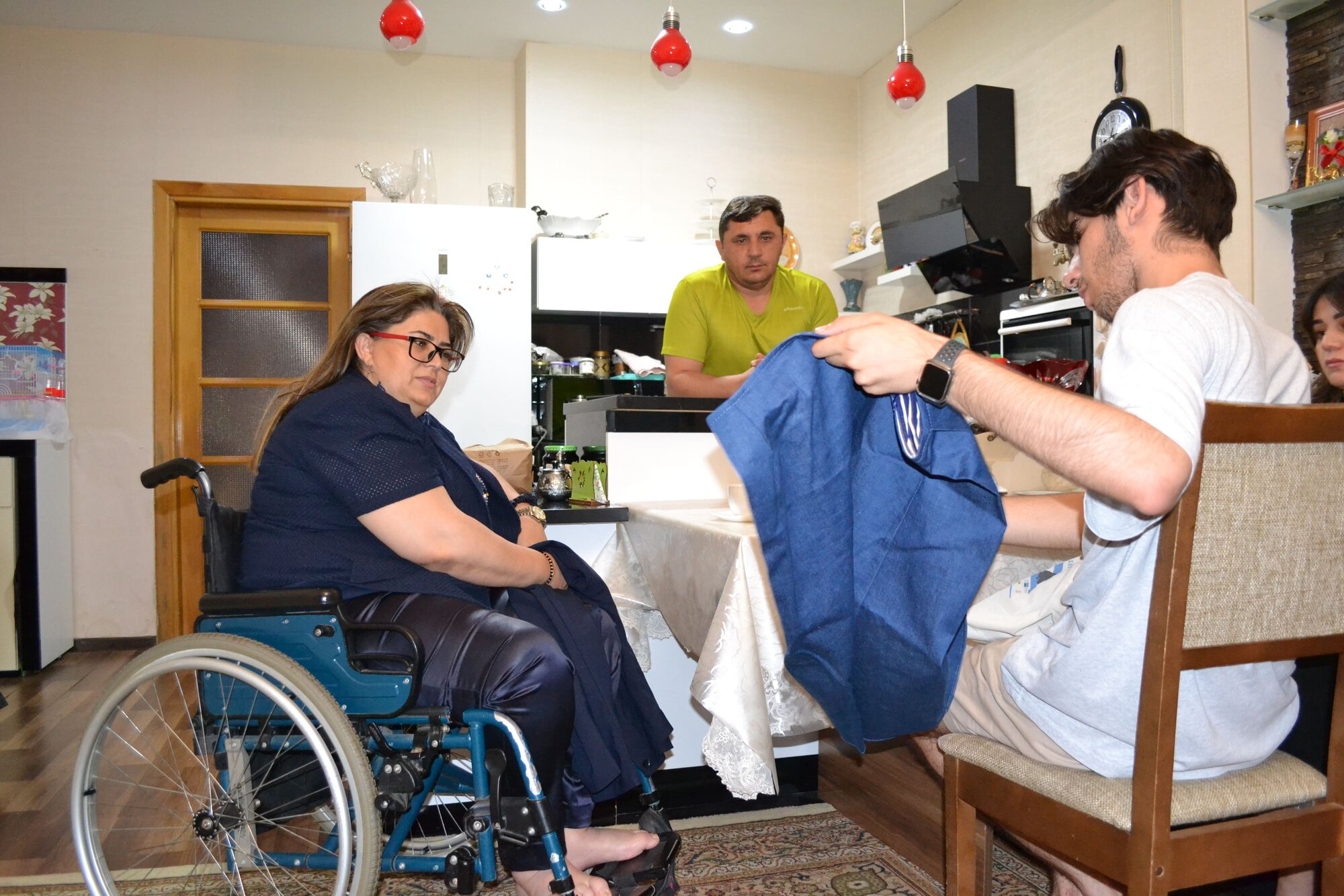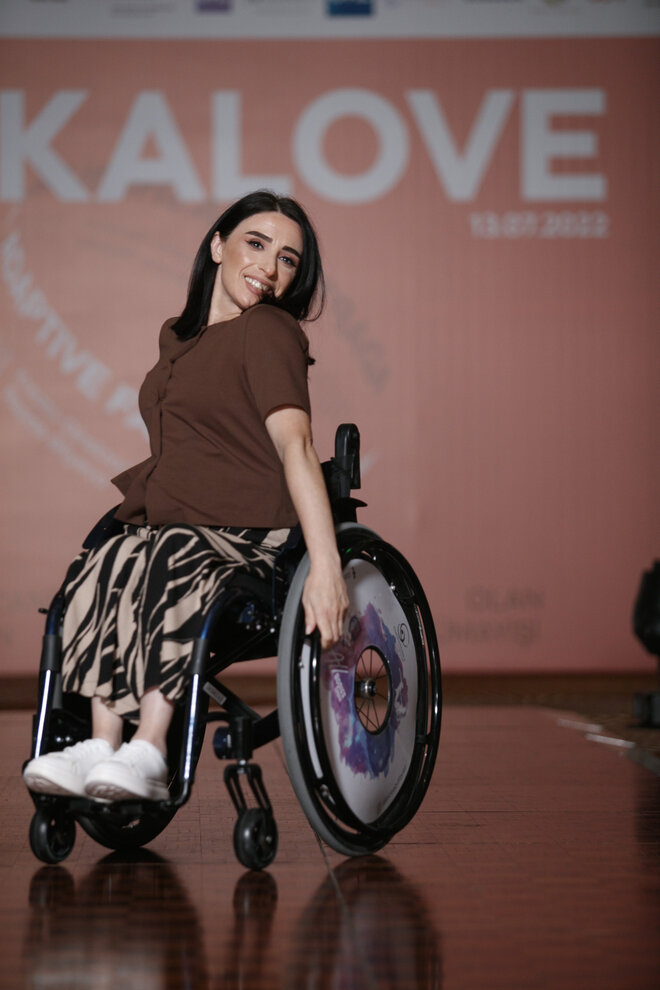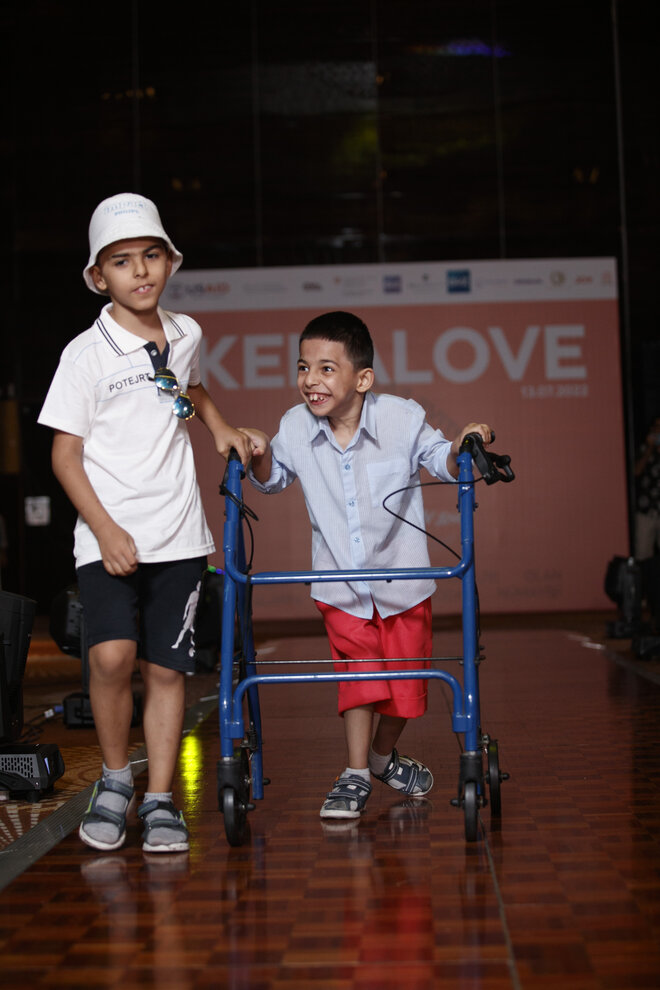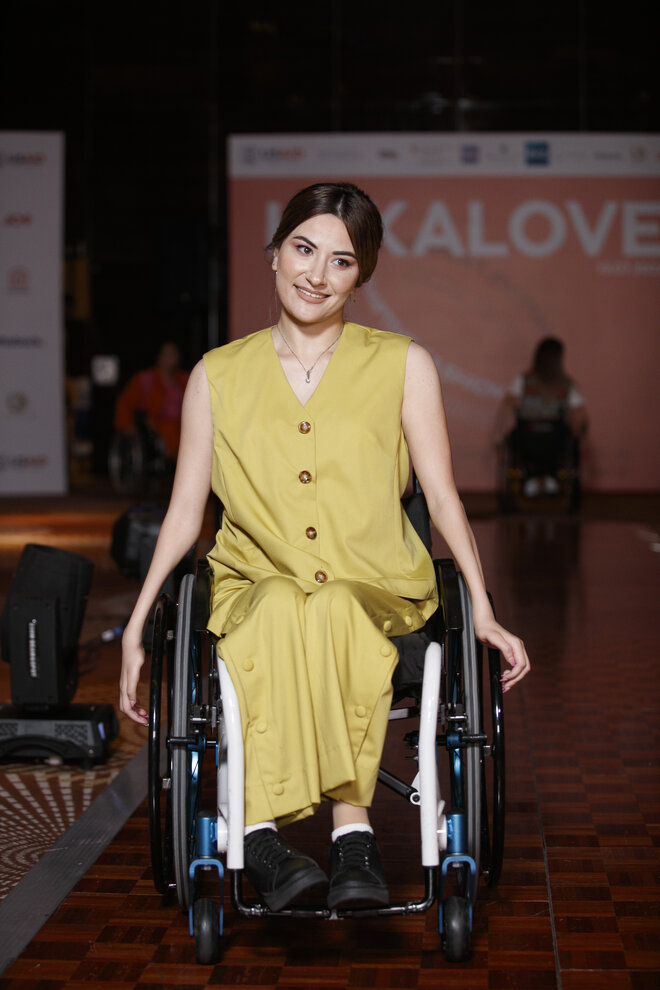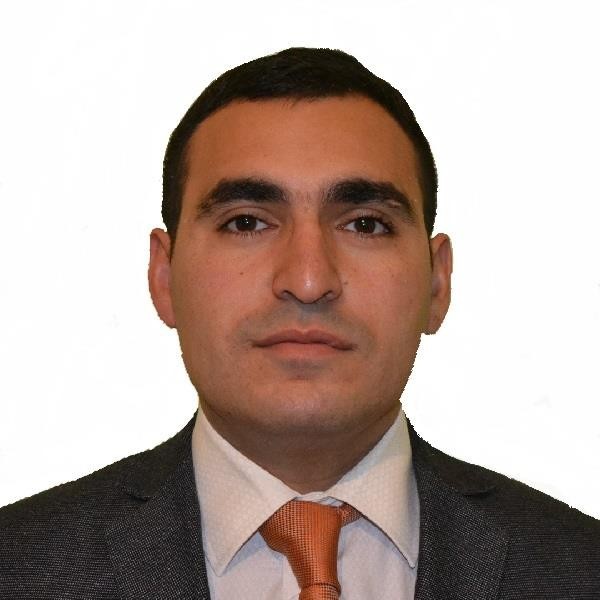The catwalk with a difference: adaptive fashion comes to Azerbaijan

This article was first published on the website of The Guardian on September 15, 2022.
An enterprising student and a designer want to make attractive clothes that disabled people can wear – and model too.
Zinyet Veliyeva took her first trip down the catwalk at the age of 48, dressed in a light blue shirt and dark trousers. Hasan, her eight-year-old son, pushed her wheelchair. "I watched videos from previous shows," says Veliyeva. "Most of the models were slim and I said to myself why not have one thick model."
When she was still at school, Veliyeva had a stroke that led to paraparesis, the partial loss of movement in the legs. She became Azerbaijan's first paralympic female athlete, qualifying for the 2012 London Paralympics in archery. She loves jumpsuits, T-shirts and trousers – the more colourful the better – but can't pull them on and off easily because they don't have zippers and buttons in the places she needs them.
During the summer, Veliyeva was one of 20 models who took part in the Kekalove adaptive fashion show at the Marriott Absheron hotel in Baku.
Male and female models with various disabilities took to the catwalk, on their own or with assistance, in front of a packed audience. The show was the idea of Mahammad Kekalov, a 21-year-old student. Months before, he had visited Veliyeva and her husband, Galib Aliyev, at their home with his business partner Rashada Aliyeva, the first adaptive clothes designer in Azerbaijan.
Aliyev also has a disability, having lost a leg when he stepped on a land mine during the first of two wars between Azerbaijan and neighbouring Armenia in the past 30 years. The conflicts resulted in hundreds of amputees. Aliyev had often thought there must be a better way to dress: "I thought it would be more convenient to take off and wear clothes together with the prosthetic limb," he says.
Aliyeva and Kekalov talked to Aliyev and created clothes based on what he said. Aliyev then tested the creations and gave feedback on what worked and what didn't.
Kekalov was inspired to start the business by his late grandmother, Salimat Kekalova. She was visually impaired, so getting dressed could be a challenge. Coupled with a year spent with an American family who looked after disabled children, he was driven to think of adaptive clothes as a solution. "As with my grandma, I see the same in the people we work with. We ask them if they need help or have any issues with clothing. They say they don't, but we find out they have problems with getting dressed. They are so used to it, they don’t see it as a problem but an everyday reality."
This is one reason he organises catwalk shows – he has now done three – he believes those who perform feel more confident about their bodies. "They move away from body stigma and that is the main reason why we do it," Kekalov says.
The first two shows took place last year. The first cost $13,000, paid for by the US embassy in Azerbaijan; by the second, Kekalov was selling the concept, encouraging companies to buy sponsorship to show solidarity with people with disabilities.

Rahim Rzayev, 36, was on the catwalk in a turquoise Hawaiian shirt and wide white trousers with buttons on both sides. Like Veliyeva, he had followed the show on social media.
He who does not take risks, gains nothing."
Rzayev
Rzayev, who recently got married and will soon be a father, has had a severe form of scoliosis since he was six, he has a curvature in his spine and a twisted bone in his right leg. His schooling was limited to a couple of weekly home visits from a teacher. He now earns a living by selling hand-crafted products but struggles to find clothes: "When I wear trousers, the waist is small and tight. If the waist is right, the hem is too long."
Rzayev persuaded his friend Khayyam Rahimov to perform with him in the show. Rahimov has anaemia and his legs are different lengths; previously he had covered his uneven clothes with a heavy jacket.
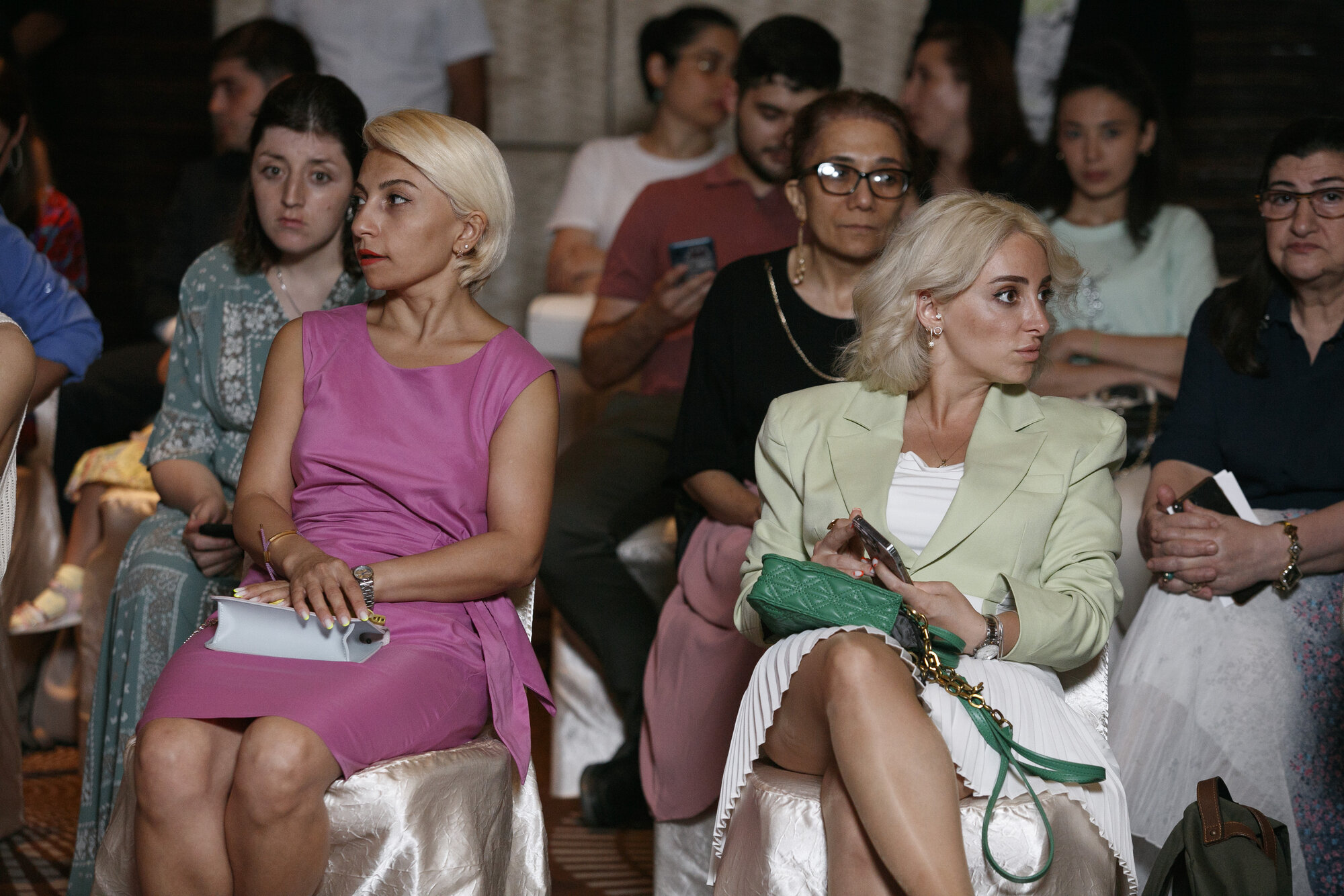
The clothes Kekalov makes range in price from €150 to €250, putting them beyond the reach of many Azerbaijanis, where the average monthly salary is about €470. The team therefore gives their clothes to the models for nothing. But Kekalov says the show must be financially viable. "Our plan is to have a supply chain to sell products in western countries, for example Germany, where there is a proven track of adaptive fashion brands."
Kekalov is also contacting representatives and fashion designers in Georgia, Turkey and Uzbekistan, countries with "similar disability ecosystems". The team plans to stage a series of shows this year in each of these countries, using disabled models.
It will help us better understand how fashion can bridge disability and geographical cultural aspects"
Kekalov


